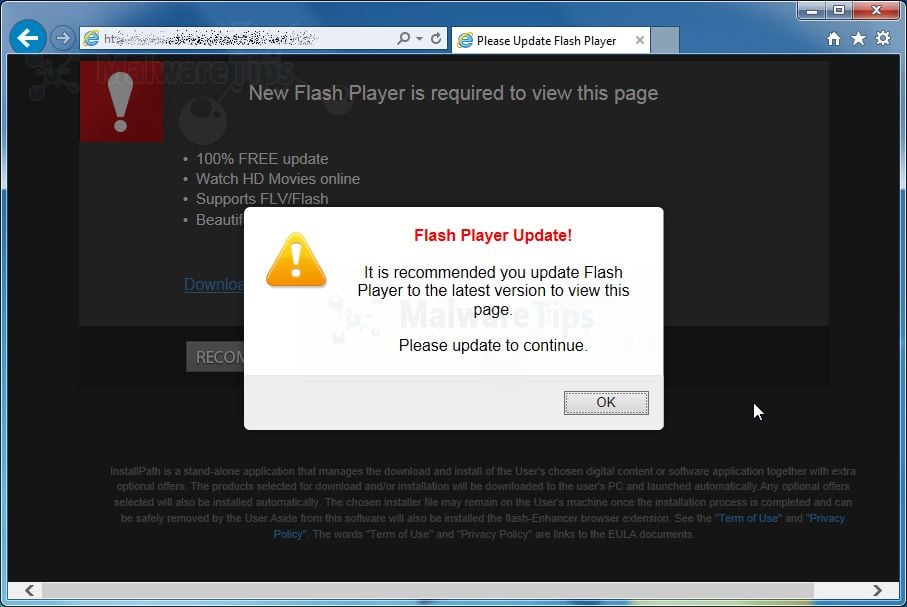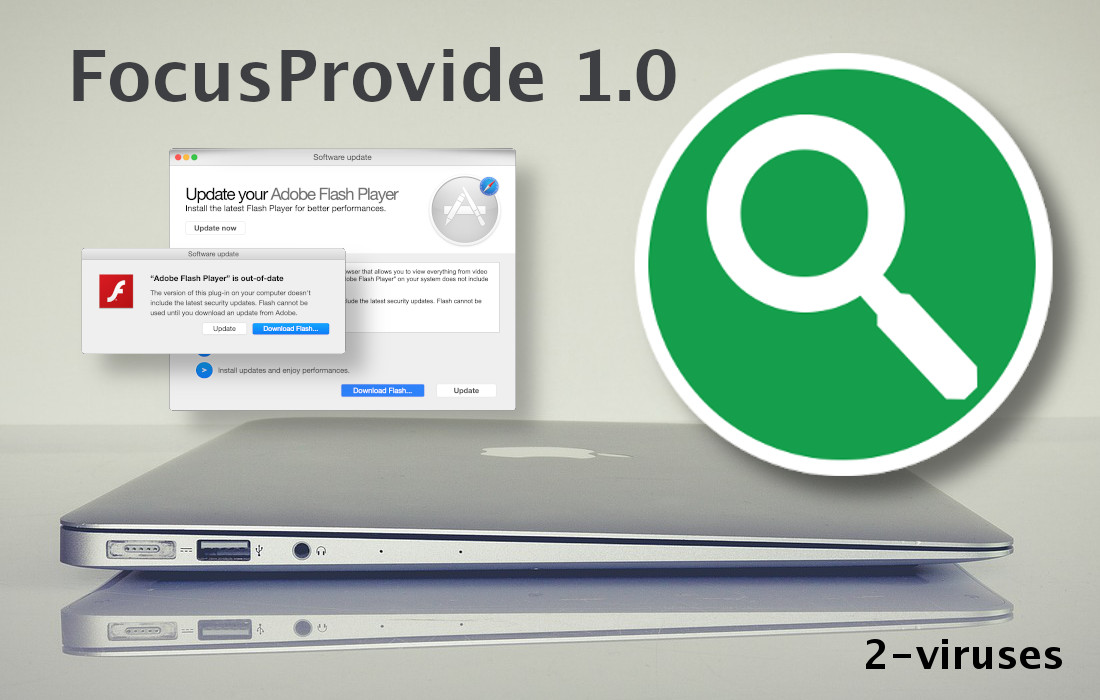Although Adobe has written and published instructions to run Flash on iOS, Steve Jobs, Apple’s co-founder, and former CEO, famously fought against the free programs and, namely, free Adobe software.
Trusted Windows (PC) download Flash Anti-Virus 4.2. Virus-free and 100% clean download. Get Flash Anti-Virus alternative downloads. Mac Flashback malware: What it is and how to get rid of it (FAQ) The Flashback Trojan is the latest malware attack to target Apple's Mac platform. Here's your guide to what it is, whether you have. Virus Mac free download - Shortcut Virus Remover, WinZip Mac, Multi Virus Cleaner 2011, and many more programs.
In an article published on apple.com in April 2010, Steve highlighted the reasons why Adobe Flash Player will never be an official component of Safari, Apple’s integrated web browser. Jobs pushed hard for an upgrade to HTML to support videos without Flash. Ultimately, the result became what we know as HTML5.
Why Is Apple Against Flash?
As highlighted is in his article, Jobs main concern was never security. In fact, he explicitly mentioned that protecting the App Store was never the main reason behind Apple’s stance against Flash. Steve argued that Flash is a closed system because it’s developed and owned by Adobe. In contrast, HTML5, CSS, Javascript are open systems which is why Apple decided to adopt them. The former Apple’s CEO was against Flash because it was 100% property of a private company despite being widely available.
In the same article, Steve Jobs went on to explain that HTML5 allows web developers to create advanced graphics, animations, and typography without relying on 3rd party software such as Flash. He also argued that major video service providers such as YouTube, Netflix, HBO, Vimeo, and FOX don’t depend on Flash. When Steve wrote his article, almost 40% of online video content was viewable on Apple products. Apple was able to meet all of their customers’ video-related needs without Flash support.
Is Flash Safe for Mac?
The short answer is yes, Flash can run on a Mac without any major issues. However, since it is not officially supported by Apple for the reasons mentioned above, it will require some tweaking first. Here’s what you need to do before and after installing Flash on a Mac:
- Check this brief guide to see which version works best with your iOS version.
- Uninstall any previous version you have of Flash Player.
- Close all applications before installing.
- After the installation finishes, reboot your device.
- When the device boots back up, head to Safari>System Preferences>Flash Player>Advanced then click Check Now.
- Close and relaunch Safari.
The most important step is making sure that you’re downloading Flash from Adobe. To avoid any confusion, click here to reach the download page. In all cases, you should always make sure that you’re downloading from adobe.com and not any other domain.
Alternatives to Flash
If you prefer not to download and install Adobe Flash for any reason, you should try using Google Chrome instead of Safari. Chrome comes with an integrated Flash player and will not require any extra permission. Flash also comes turned on by default in Google Chrome so you will not have to do any extra tweaking.
Alternatively, you should consider dealing with websites built on modern technologies. Particularly, websites who support HTML5. As mentioned in this article by Aphr, 95% of websites who used to rely on Flash switched to HTML5. If everyone is switching to Flash, it shouldn’t be hard to find an alternative to your favorite website after a quick online search.
Nov. 15, 2018
Try Norton 360 FREE 30-Day Trial* - Includes Norton Secure VPN
30 days of FREE* comprehensive antivirus, device security and online privacy with Norton Secure VPN.
*Terms Apply
The big question out there when it comes to Apple products is, “Can a Mac get a virus?” The short answer? Absolutely.
Apple computers can get viruses and malware just like PCs can. While iMacs, MacBooks, Mac Minis, and iPhones may not be as frequent targets as Windows computers, all have their fair share of threats.
Adware, spyware, ransomware, and hardware and software vulnerabilities are some of the problems now affecting Macs, and not just PCs. Read on to learn more about some of the most common malware and viruses that can affect Apple devices, what the signs are, and what you can do to help protect your devices.
Four types of Apple viruses — and a vulnerability
Apple viruses can range from annoying to outright damaging.
1. Adware on Macs
Adware is a potentially unwanted program that can bombard users with advertising pop-ups. Adware can be both malicious or benign. Some adware can work in conjunction with spyware, a type of software that can spy on and record everything you do online.
Pop-up ads can lead users to malicious websites that could deliver data-stealing spyware onto their Macs. Adware can also send information back to a third-party server. This information could be used to commit crimes, such as identity theft, fraud, or even extortion.
Although they’re not malicious, even benign pop-up ads can be extremely annoying and intrusive.

2. Trojan horses on Macs
Trojan horses are common to Macs and PCs. One notable Apple computer Trojan horse was found in February 2017. Dubbed “MacDownloader,” it was malicious software hiding in a fake Adobe Flash update.

The MacDownloader malware was a form of spyware that attempted to steal personal data, including the user’s keychain, which stores usernames, passwords, PINs, credit card numbers, and more.
3. Macro viruses on Macs
Microsoft Word macro viruses have been around for a long time, mainly affecting PCs, but eventually jumping over to the Mac OS.
Macro viruses go to work when a user opens an infected file with macros enabled. The macro then tries to run a code that could perform functions such as taking screenshots and even accessing webcams.

Macro viruses are capable of creating new files, corrupting data, moving text, sending files, formatting hard drives, and inserting pictures, among other things. One of their more popular uses is to deliver destructive viruses and malware.

4. Ransomware on Macs
Ransomware is finally here for the Mac. KeRanger was one of the first significant ransomware outbreaks for Macs. As its name implies, ransomware presents users with an ultimatum: pay a fee to unlock their computer or specific files to reclaim personal data. If users don’t pay the price, they risk losing the data forever.
Macs can have software and hardware vulnerabilities, too
Software and hardware vulnerabilities can affect all devices, no matter their maker. You may have heard of a major vulnerability last year dubbed Meltdown and Spectre.
This was a particular form of malware that affected the processor chips of PCs and Macs. This hardware vulnerability allowed programs to steal data that was currently being processed on the computers’ chip. This included data like your passwords stored in a password manager or browser, emails, personal documents, photos, and instant messages. All of these types of information were vulnerable until the right software patches were installed.
How to tell if your Mac has a virus
If you have a feeling that your Mac is behaving oddly or is just “off,” you may have a virus. Strange activity, applications seeming to “lag” when opening, and more can all be warning signs you may have malicious software on your Mac. Flash comic #1 for sale.
1. Ads and pop-ups are popping up often.
This could be a sign of adware. Being bombarded with a slew of advertisements every time you perform an action on your computer should be a signal that it’s time to run a virus scan. Signs may include unusual amounts of banner ads, or fake pop-ups that recommend updates to your computer.
2. Your computer is slow.
Mac users are familiar with what is referred to as the “spinning wheel of death.” That’s when the cursor turns into a rainbow wheel. This is a sign of a sluggish computer. That little wheel means that your Mac is working overtime, trying to do too many things at once. When this happens, it could mean there’s a malicious program running in the background you may not know about.
3. You have browser issues.
Did your browser suddenly change its homepage to something you’ve never seen before? If your browser is unresponsive, or starts crashing regularly, you might have a virus.
4. Nothing at all.
Canon pixma 2522 printing software mac download. That may sound odd, but it’s true. A lot of malware aims to be installed without the user’s knowledge and to run quietly in the background. This is why installing strong antivirus software is crucial for Macs, as it can detect threats you may not be able to.
Free Mac Virus Scan
Do Macs need antivirus software?
Antivirus software is kind of like insurance for your car or house. You may not need it all the time, but when trouble comes calling, you’ll be glad you have it. While it’s true that Macs have historically been considered to be less vulnerable to malware attacks than PCs, there are still significant threats out there. Adding an extra layer of device protection, like Norton Security Deluxe, is one way to help stay ahead of the curve.
Get multiple layers of protection for your online privacy and more.
Joy to the digital world. The best offer of the year is here.
Editorial note: Our articles provide educational information for you. NortonLifeLock offerings may not cover or protect against every type of crime, fraud, or threat we write about. Our goal is to increase awareness about cyber safety. Please review complete Terms during enrollment or setup. Remember that no one can prevent all identity theft or cybercrime, and that LifeLock does not monitor all transactions at all businesses.

Apple Computers And Virus
Copyright © 2020 NortonLifeLock Inc. All rights reserved. NortonLifeLock, the NortonLifeLock Logo, the Checkmark Logo, Norton, LifeLock, and the LockMan Logo are trademarks or registered trademarks of NortonLifeLock Inc. or its affiliates in the United States and other countries. Firefox is a trademark of Mozilla Foundation. Android, Google Chrome, Google Play and the Google Play logo are trademarks of Google, LLC. Mac, iPhone, iPad, Apple and the Apple logo are trademarks of Apple Inc., registered in the U.S. and other countries. App Store is a service mark of Apple Inc. Alexa and all related logos are trademarks of Amazon.com, Inc. or its affiliates. Microsoft and the Window logo are trademarks of Microsoft Corporation in the U.S. and other countries. The Android robot is reproduced or modified from work created and shared by Google and used according to terms described in the Creative Commons 3.0 Attribution License. Other names may be trademarks of their respective owners.
